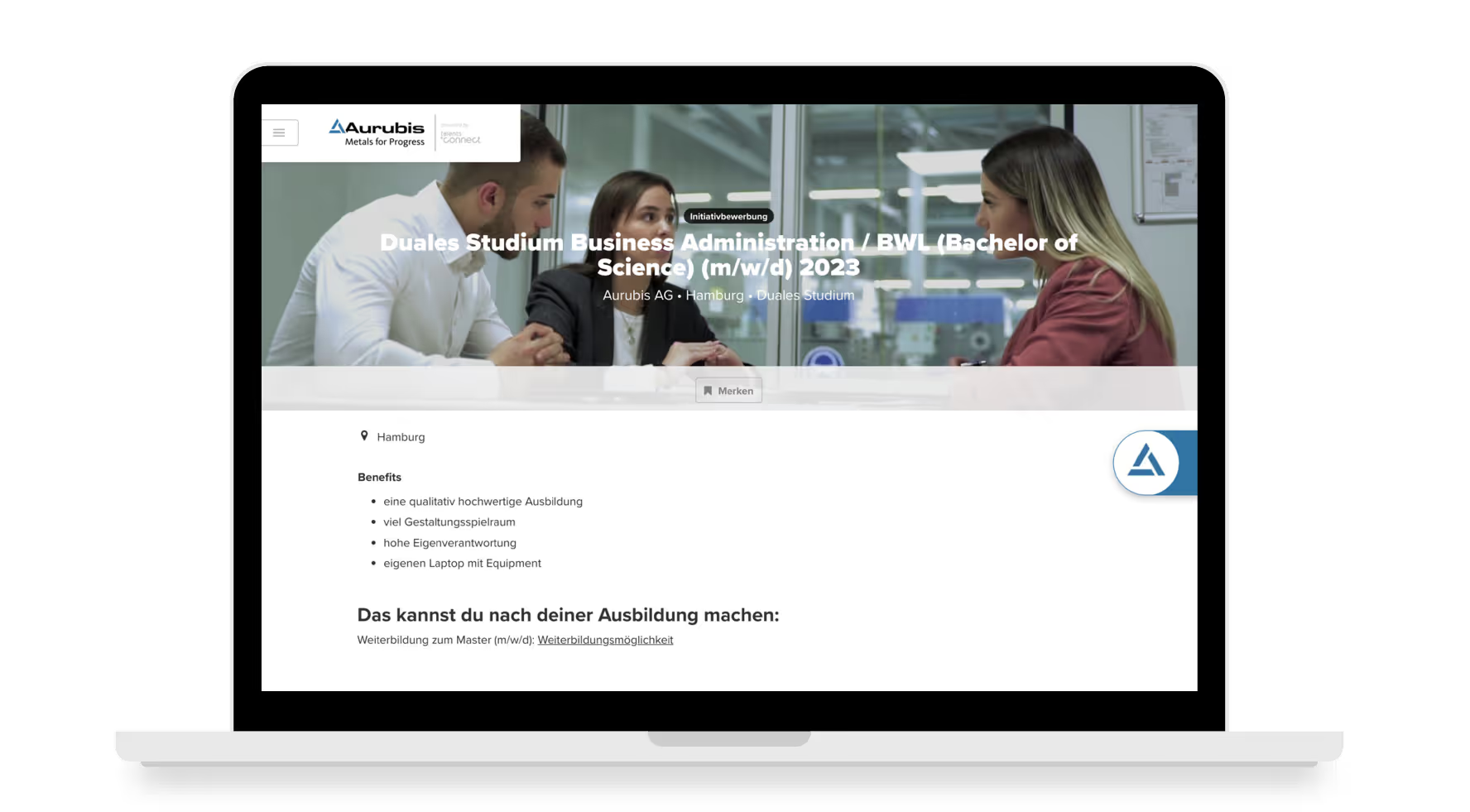Inspiring young talents — an art that no one can do? Yet. By 2030, there will be significantly more older workers than workers under 20 years of age. Nevertheless, Gen Z is already in the starting blocks for the job market.1 With new impulses, ideas and attitudes, the youngest career entrants will bring a breath of fresh air to companies. In times of a shortage of skilled workers, it is now time to attract young talent and successfully retain them to the company.
But how is the target group correctly addressed by pupils and students? First and foremost is the job description. Because: the job ad is the “shop window” in your company. For young candidates, it is That Flagship, as most job offers are found directly via search engines, such as Google for Jobs.2
And we all know that there is no second chance to make a first impression. That's why the job description must be correct.
- Tip 1 - Understanding the target group
- Tip 2 - Use the right content
- Tip 3 - Speak the language of the target group
- Tip 4 - Don't forget an extended audience
Tip 1: Understanding the target group
Gen Z includes people born after 1999. This new generation has grown up with Facebook, Instagram and Co. She therefore needs a completely different approach than generations before her. While long running texts on training offers were common practice in the past, today information should be divided into “digestible” bits. Details about the job should be well structured and presented in an attractive way.
One thing is clear: The youngest target group largely starts from scratch when looking for a job. This means that she is not only looking for the future dream company, but also the dream job. This is also reflected in their clicking behavior. The click areas, which, for example, have the title “What suits me?” wear, are by far the most frequently clicked.3
Starting your career requires careful consideration. This is also reflected in the scrolling behavior of Gen Z. Your time spent on career sites is longer than with older generations. They read and interact significantly more with the content offered to find out whether the job they are looking for really suits them. On your career page, you should therefore rely on pictures, videos or even chat functions. This gives candidates the opportunity to find out about their future at work in a variety of ways.
Tip 2: Use the right content
You can describe job profiles as clearly as possible. Because career starters want to know what the company offers them. Benefits such as laptops, smartphones or bonus payments play less of a role than direct insights into everyday working life. With “typical day stories” — prepared with picture galleries, videos and stories from current trainees — students can see what's in store for them and whether the job really suits them. This also saves recruiters time and effort, because they also want to conduct interviews with the right candidates.

Gen Z strives for self-fulfillment and free development in their free time and at work. Information on development prospects and takeover opportunities should therefore not be neglected. This also includes the Basics a job advertisement: location of the company, training or study, as well as information about the university of applied sciences or the course of the training.

In order to perfectly prepare the target group for an interview, information about the application process is useful. These can be integrated into the job posting with authentic Q&A information or videos from other trainees. Since the scrolling depth of students is usually higher than for other target groups, it is worthwhile to be more detailed and diverse in the job posting.4 In the podcast “Clara makes it clearer” From talentsconnect, you can listen to why these job posting tips are so important for students.
Tip 3: Speak the language of the target group
To convince Gen Z, you should use sensitive language when posting your job. Make sure that your job description is accessible by using understandable phrases, short sentences and as few foreign words as possible and only as many as necessary. Depending on the requirement profile, it is a good idea to advertise the position in several languages.
Inclusion is an important issue for young adults. Gender is discussed a lot, although this is ultimately not about the form, but about the general use of gender-neutral language. Diversity is therefore becoming increasingly important, both for young talents and for companies. The sensitive design of your job ad thus also strengthens the position of your employer brand.
Tip 4: Don't forget an extended target group
Career orientation is not just about students. Parents and teachers must not be left out in your search for talent. They are an important mouthpiece for reaching Gen Z. Parents in particular want to know what happens after completing their training or dual studies and what development opportunities are offered. They are still one of the most important advisors for young adults. This potential should not go untapped. With the right approach, you can specifically address this target group.
1 Federal Statistical Office: Year 2030: More people over 65 than under 20 years of age in working life. 2020.
Press release No. 436.
2 Weitzel et al.: Generation Z — the workers of tomorrow. 2020. Research Report.
3 talentsconnect AG. Data analytics. Internal data sources. 2021.
4 talentsconnect AG. Data analytics. Internal data sources. 2022.

